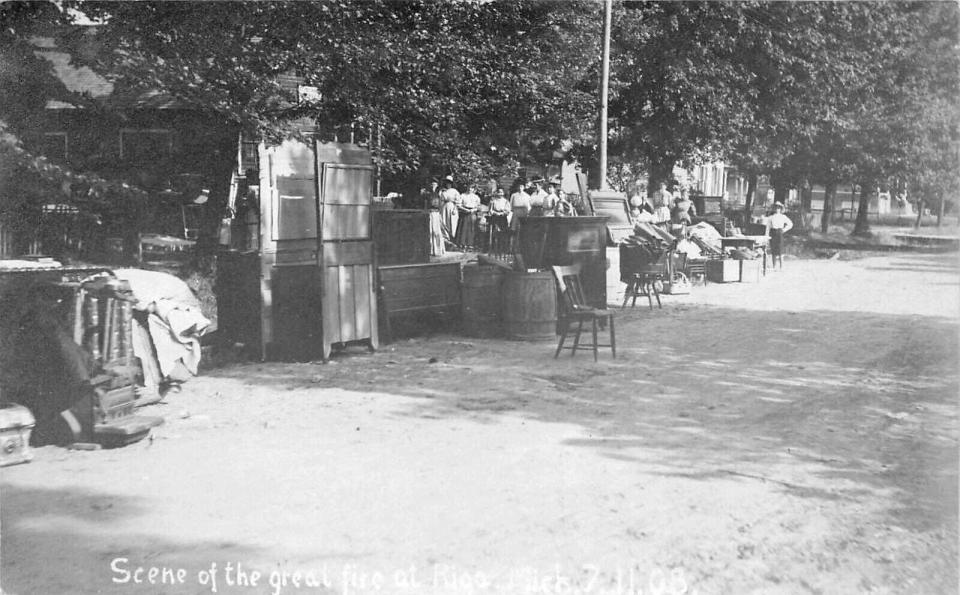Small towns and communities across early 1900s Lenawee County had few options to fight fire. It was a time when fire department subscriptions lacked support and most “organized” firefighter plans comprised of bucket brigades.
After all, some would argue, big fires don’t happen to small communities.
Despite that mindset, many Lenawee County communities suffered loss by fire, whether it came from a lightning bolt, an overheated wood stove or arson.
Riga’s turn came during the early morning hours of July 11, 1908.
According to the period Daily Telegram, residents were awakened in the middle of the night to smoke coming from the direction of John Jacob Walper’s grain elevator.
It was later surmised a passing train on the Lake Shore and Michigan Southern Railroad spewing sparks and soot triggered the slow-combustion fire, which spread rapidly by a strong night wind and draft. The fire jumped to two grain-filled cars on a side track, and then to the flour and grist mill toward the north side of town. The community’s flour and feed store, Charles Gillam’s saloon, L.C. Knight’s drug store, Fred Jasmund’s barber shop, the Mallory-Ford lumber yard offices and several homes were among the structures destroyed. The post office and bank were “badly scorched,” the Telegram reported.
V.E. Burdon was reported to have first spotted the flames as he prepared for a day’s work. Telephone calls were made to the Blissfield fire department, through which an engine responded “within 40 minutes of the time the word was sent.”

Burdon kicked the door to the smoldering elevator to see if he could salvage anything from the burning building. His action actually created a draft due to the stiff breeze, and within moments the wood structure was fully engulfed. Gasoline storage tanks in a nearby engine room north of the elevator contributed to the rapid spread through the business district.
Adrian’s fire department also sent a firefighting wagon, which arrived as daylight began to break. By then, it was too late. The loss was calculated at $30,000, over a million dollars in today’s money. William Knoblauch’s house was lost, as was the dwellings of Mrs. George Steinmuller and Clara Schneider.
Subscribe Now: For all the latest local developments, breaking news, and high school and college sports content.
While the loss was huge, the residents stormed the buildings ahead of the blazes and rescued “much of the liquor and furniture of the hotel, as well as the barber shop fixtures and the flour in the warehouse.” A photographer after sunrise caught the surreal scene on camera, a line of furnitures and fixtures lining the street as residents gazed at what remained of the businesses. Still others searched for and doused “hot spots” in the ashes, to prevent further destruction by a fire no one at the time could have anticipated.
— Dan Cherry is a Lenawee County historian.
This article originally appeared on The Daily Telegram: Lenawee County History: 1908 Riga fire showed protection shortfall
Signup bonus from





